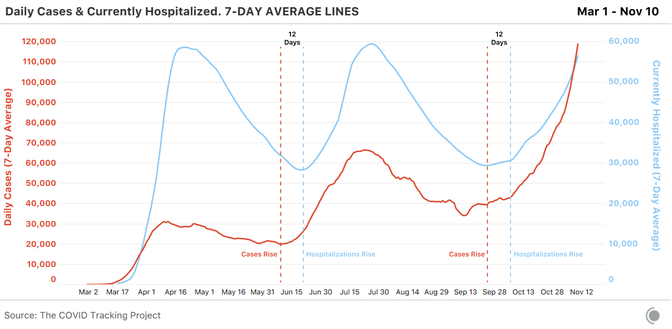
It has been too long since I’ve done this, but here are some great pandemic-related pieces from the last month or so, from people whose work I respect.
If you’ve liked my work, perhaps you’ll also like the work that I like.
If you’ve liked my work, perhaps you’ll also like the work that I like.
.@rkhamsi, who's consistently been one of the best pandemic reporters, wrote about the absurd policies that are doing the rounds: wired.com/story/a-lack-o…
and about whey we need to SEE what COVID-19 is doing to people. wired.com/story/this-pan…
and about whey we need to SEE what COVID-19 is doing to people. wired.com/story/this-pan…
.@CarolineYLChen wrote this searing piece about how frustrated health-care workers are. They "don’t need patronizing praise. They need resources, federal support, and for us to stay healthy and out of their hospitals."
propublica.org/article/the-en…
propublica.org/article/the-en…
.@SpeakPatrice wrote this amazing reflection on creating her newsletter Coronavirus News for Black Folks--what she saw, what others didn't, and why staying in the game matters.
wired.com/story/coronavi…
wired.com/story/coronavi…
.@emjmccarty wrote about losing her mother to COVID-19, what it takes to say goodbye to someone right now, and what this means for Thanksgiving. Heartbreaking, beautiful, necessary.
crosscut.com/opinion/2020/1…
crosscut.com/opinion/2020/1…
.@zeynep, who has been right about the pandemic since the very start, has an urgent message that demands attention as the third surge continues.
theatlantic.com/health/archive…
theatlantic.com/health/archive…
.@rachgutman has compiled one of the clearest sets of rules for how to get through the holiday season without risking the lives of those around you.
Chief among them: Don't spend time indoors with people outside your household.
theatlantic.com/health/archive…
Chief among them: Don't spend time indoors with people outside your household.
theatlantic.com/health/archive…
.@amandamull, in typical @amandamull fashion, wrote a thought-provoking and often profound look at why feeling safe and being safe are so very different.
theatlantic.com/health/archive…
theatlantic.com/health/archive…
.@olgakhazan wrote this keenly observed and empathetic piece about why eating in restaurants is a terrible idea, and why people are still doing it.
theatlantic.com/politics/archi…
theatlantic.com/politics/archi…
.@MeganMolteni wrote about why state leaders cannot just punt responsibility to their citizens and then blame them for not resisting lax policies. Iowa is the case study.
wired.com/story/iowas-co…
wired.com/story/iowas-co…
.@juliabelluz wrote about Vermont--a state that's doing the right thing by specifically focusing on helping its poorest and most vulnerable people.
vox.com/2020/11/19/215…
vox.com/2020/11/19/215…
.@ushamcfarling wrote about how the Cherokee Nation curtailed its own COVID-19 surge.
It's a great piece, and McFarling has been consistently covering the pandemic's impact on communities who aren't otherwise getting much coverage.
statnews.com/2020/11/17/how…
It's a great piece, and McFarling has been consistently covering the pandemic's impact on communities who aren't otherwise getting much coverage.
statnews.com/2020/11/17/how…
.@acsifferlin wrote about how COVID-19 long-haulers created their own movement (featuring @ahandvanish, @fi_lowenstein & others from the pioneering Body Politic group).
coronavirus.medium.com/how-covid-19-l…
coronavirus.medium.com/how-covid-19-l…
.@annehelen (in her excellent newsletter--subscribe!) interviewed sociologist @JessicaCalarco about how women are navigating parenting and relationships in the pandemic. "Other countries have social safety nets. The U.S. has women."
annehelen.substack.com/p/other-countr…
annehelen.substack.com/p/other-countr…
And finally, @sarahzhang, one of the greatest science writers around, wrote about the hope brought by this month's vaccine news. The endgame is in sight. We just need to reach it.
theatlantic.com/health/archive…
theatlantic.com/health/archive…
Happy reading. Stay safe.
• • •
Missing some Tweet in this thread? You can try to
force a refresh





